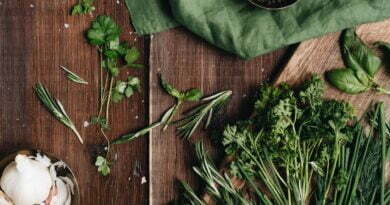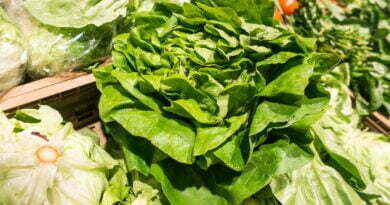What vegetables can I plant in February?
As winter’s chill persists, February emerges as a transitional month in the allotment gardener’s calendar. This detailed guide is your companion in unlocking the potential of your plot, providing insights into the diverse vegetables that eagerly anticipate their home in the enriched soil. Let’s embark on a journey through hardy greens, resilient legumes, aromatic bulbs, cruciferous wonders, earthy root vegetables, and an array of other delectable additions, shaping the canvas of your flourishing February allotment.
1. Hardy Greens: Sowing the Seeds of Resilience
In the heart of winter, hardy greens take center stage. Spinach, kale, chard, collard greens, and mustard greens, with their ability to endure cooler temperatures, become the anchors of your early-season harvest. Delve into the nuances of soil preparation, optimal planting depth, and companion planting strategies to create a resilient and thriving green patch.
February marks the opportune moment to introduce these greens into your allotment. Not only do they withstand winter’s remnants, but they also contribute fresh, nutrient-packed leaves for culinary delights. Understanding the unique needs of each green, from spinach’s preference for well-draining soil to kale’s love for nitrogen-rich environments, ensures a bountiful and diverse harvest as the days gradually lengthen.

2. Peas and Broad Beans: Embracing Winter’s Last Breath
Peas and broad beans defy the lingering winter, embracing the last breaths of frost. Explore the intricacies of soil conditions, spacing, and trellising techniques to ensure these legumes thrive. Uncover the benefits of early planting, enhancing your allotment’s productivity and diversity.
The hardiness of peas and broad beans becomes apparent as they weather the last glimpses of winter. By sowing their seeds in February, you not only grant your allotment a head start but also set the stage for a hearty legume harvest. Dive into the world of legume companionship, understanding how peas and beans benefit neighboring plants while contributing nitrogen back to the soil.
3. Onions and Shallots: Aromatic Guardians of the Allotment
February becomes the stage for introducing the aromatic allure of onions, shallots, and garlic. Discover the art of companion planting, soil enrichment, and spacing to cultivate a fragrant and pest-resistant allium haven. Unearth the secrets of nurturing these aromatic bulbs and maximizing their protective benefits.
Onions, shallots, and garlic stand not only as culinary essentials but also as natural protectors of your allotment. Beyond the aromatic symphony they bring to your garden, these alliums play a vital role in deterring pests. Explore the subtle differences in planting depth, spacing, and varieties to create a tapestry of allium delights that enhance the overall health of your February allotment.
4. Brassicas – Cabbage, Broccoli, Cauliflower, and Brussels Sprouts: Flourishing in the Cool Embrace
Cruciferous wonders, including cabbage, broccoli, cauliflower, and Brussels sprouts, find solace in February’s cool embrace. Delve into the specifics of soil preparation, pest management, and seasonal considerations to cultivate a thriving brassica corner. Uncover the secrets of nurturing these resilient greens for a flavorful and nutritious yield.
As winter’s chill lingers, the robust nature of brassicas shines through. By understanding the preferences of each member of the cruciferous family, from cabbage’s affinity for well-drained soil to Brussels sprouts’ need for sturdy support, you can ensure a successful and diverse brassica harvest. February becomes the canvas for a vibrant display of textures and flavors.

5. Root Vegetables – Carrots, Beets, Radishes, and Turnips: Unveiling Earth’s Hidden Treasures
Beneath the surface, the earth awakens, providing an opportune moment for sowing the seeds of root vegetables. Carrots, beets, radishes, turnips, and parsnips, with their vibrant colors and earthy flavors, take center stage. Explore the intricacies of soil preparation, thinning, and harvesting techniques to unveil the hidden treasures beneath the soil.
Root vegetables, with their resilience and storage potential, become the stars of your February allotment. By understanding the unique needs of each root crop, from carrots’ preference for loose and sandy soil to beets’ affinity for consistent moisture, you set the stage for a colorful and nutritious harvest. Dive into the art of succession planting, ensuring a continuous supply of root vegetables throughout the growing season.
6. Leafy Greens – Lettuce, Arugula, Swiss Chard, and Mustard Greens: A Symphony of Flavors
Extend your February bounty with an assortment of leafy greens. Lettuce, arugula, Swiss chard, mustard greens, and spinach offer a symphony of flavors and textures. Dive into the considerations of succession planting, optimal spacing, and nutrient-rich soil to ensure a continuous harvest of crisp and tender leaves.
Leafy greens, with their quick growth and versatility, become the palette for your February allotment canvas. By exploring different varieties and understanding their preferences, you create a symphony of flavors that elevate your culinary adventures. From the peppery notes of arugula to the tender leaves of Swiss chard, each green contributes to a vibrant and diverse harvest.

As we navigate the nuances of planting hardy greens, legumes, aromatic bulbs, cruciferous wonders, root vegetables, and a variety of leafy greens in February, your allotment transforms into a vibrant canvas. Armed with knowledge and dedication, you’re not merely cultivating a plot; you’re crafting a tapestry of flavors, textures, and colors that will grace your table in the months to come. With gardening gloves on and trowel in hand, let February be the month where your allotment journey unfolds, painting a tapestry of green hues and a symphony of delectable delights.




